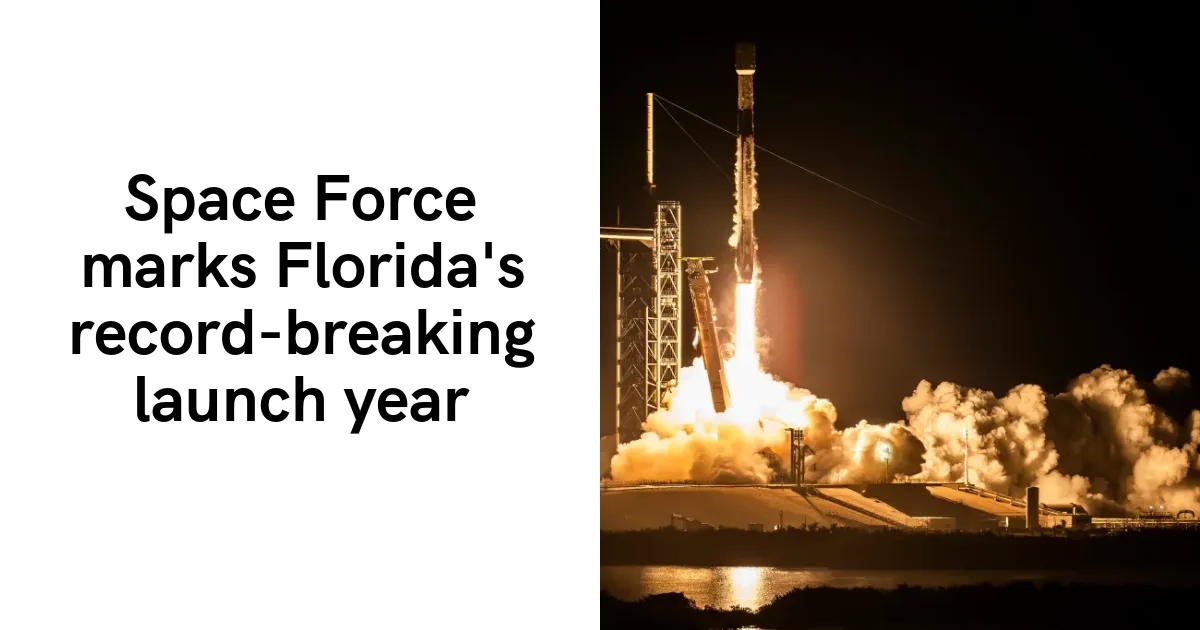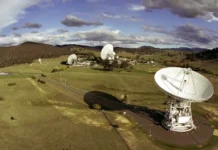In a remarkable display of technological advancement and operational efficiency, Florida’s Space Coast recently concluded a record year with 93 successful launches from Cape Canaveral Space Force Station and NASA’s Kennedy Space Center. This impressive feat marks a significant increase from the 74 launches recorded in the previous year, 2023. This surge in activity underscores the growing importance of space exploration and the increasing role of private companies in this sector.
Brigadier General Kristin Panzenhagen, who commands the Eastern Range and Space Delta 45, attributes this accelerated pace to several key innovations implemented by both the Space Launch Delta 45 team and the private sector. In an interview with SpaceNews, Panzenhagen stated, “We’ve been able to reach these incredible numbers by leveraging automation, modernizing infrastructure, and streamlining processes.” Essentially, these advancements have enabled the team to handle a higher volume of launches more efficiently.
Space Launch Delta 45 is based at Patrick Space Force Base in Florida and is a critical unit of the United States Space Force. This unit is charged with overseeing and managing space launch operations along the East Coast, a responsibility that has grown significantly as the number of launches has increased.
A major contributor to this record-breaking year is Elon Musk’s SpaceX, which accounted for an overwhelming 88 of the 93 launches from the Eastern Range in 2024. The remaining five were conducted by the United Launch Alliance (ULA), another key player in the space launch industry. SpaceX’s achievement is particularly noteworthy as it completed an unprecedented 134 commercial and government missions in the year 2024 alone. These missions included 62 launches from Cape Canaveral Space Force Station, 26 from Kennedy Space Center, and 46 from Vandenberg Space Force Base in California. Additionally, SpaceX conducted four test flights of its next-generation Starship vehicle from its facilities in Texas.
To accommodate this surge in launch activity, Space Launch Delta 45 introduced new processes to reduce the turnaround time between launches. The implementation of automated flight safety technologies by SpaceX has been a pivotal factor in achieving this efficiency. These technologies have significantly reduced the need for extensive personnel involvement and decreased the time required for pre-launch preparations, thus enhancing the overall launch cadence.
In a strategic move to manage SpaceX’s rapid launch schedule, the Space Force’s Space Systems Command introduced the “One Falcon” initiative. This program aims to unify personnel across the Eastern and Western Ranges, allowing for a more flexible allocation of resources. “This cross-training effort enables us to surge resources where needed and fully utilize the talent on that team,” Panzenhagen explained. This initiative reflects a broader trend in the industry towards greater collaboration and resource optimization.
The high volume of commercial launches has also had ripple effects on national security operations, even though only four of the 93 missions from the Eastern Range in 2024 were dedicated national security launches. Innovations in the commercial space sector, such as investments in infrastructure and rapid response capabilities, have indirectly benefited military operations. These advancements enhance the resilience and responsiveness of national security missions. Panzenhagen highlighted the “Rapid Response Trailblazer” RRT-1 mission as a prime example. During this mission, SpaceX managed to launch a GPS satellite within a compressed timeline, showcasing the synergy between commercial and military objectives.
While SpaceX continues to dominate the launch manifest, the Space Coast is preparing for increased competition in the national security launch sector. Blue Origin, led by Amazon.com founder Jeff Bezos, is poised to debut its New Glenn rocket in early 2025. The company officially became a national security space launch provider in 2024 and is now required to complete a successful inaugural flight to compete for task orders under a significant Pentagon contract. “Anytime we can get a new company and a new rocket design into the mix, it improves our resiliency,” Panzenhagen noted, emphasizing the importance of diversifying launch capabilities.
In the meantime, ULA’s Vulcan Centaur rocket is awaiting certification to fly national security missions. The rocket successfully completed two flights in 2024; however, it faced an anomaly with one of its solid boosters. Despite this setback, Panzenhagen emphasized the collaborative relationship between the Space Force and ULA, stating, “We’re working with them through the engineering process and look forward to seeing Vulcan fly.” The Vulcan Centaur is designed to replace ULA’s Atlas 5 and Delta 4 vehicles and represents a crucial component of the Space Force’s strategy to maintain multiple launch options.
The developments on Florida’s Space Coast are extremely significant, not just for the region, but for the entire space industry. The combination of increased launch frequency, technological advancements, and competitive dynamics among private companies is setting the stage for a new era in space exploration and utilization. The growing involvement of private enterprises like SpaceX, Blue Origin, and ULA is reshaping the landscape, bringing innovative approaches and efficiencies that were previously unimaginable.
For those interested in the future of space exploration, these trends highlight the importance of continued investment in technology and infrastructure. The successes of 2024 demonstrate that with the right innovations and strategic collaborations, the pace of progress in space exploration can be accelerated to meet the growing demands of both commercial and military interests. As we look to the future, the lessons learned from this record-breaking year will likely inform strategies and initiatives aimed at further advancing our capabilities in space.
For more detailed insights and developments related to space launches and innovations, you can refer to the original article on SpaceNews. This informative source provides in-depth coverage of the latest happenings in the space industry, offering valuable perspectives on how these advancements are shaping our understanding and use of space.
In conclusion, the achievements of Florida’s Space Coast in 2024 serve as a testament to the power of innovation, collaboration, and strategic foresight. The record number of launches not only marks a milestone in space exploration but also sets a precedent for what can be achieved when industry leaders and governmental agencies work together towards a common goal. As we move forward, the continued success of these initiatives will undoubtedly play a pivotal role in shaping the future of space exploration and its impact on our world.
For more Information, Refer to this article.


































